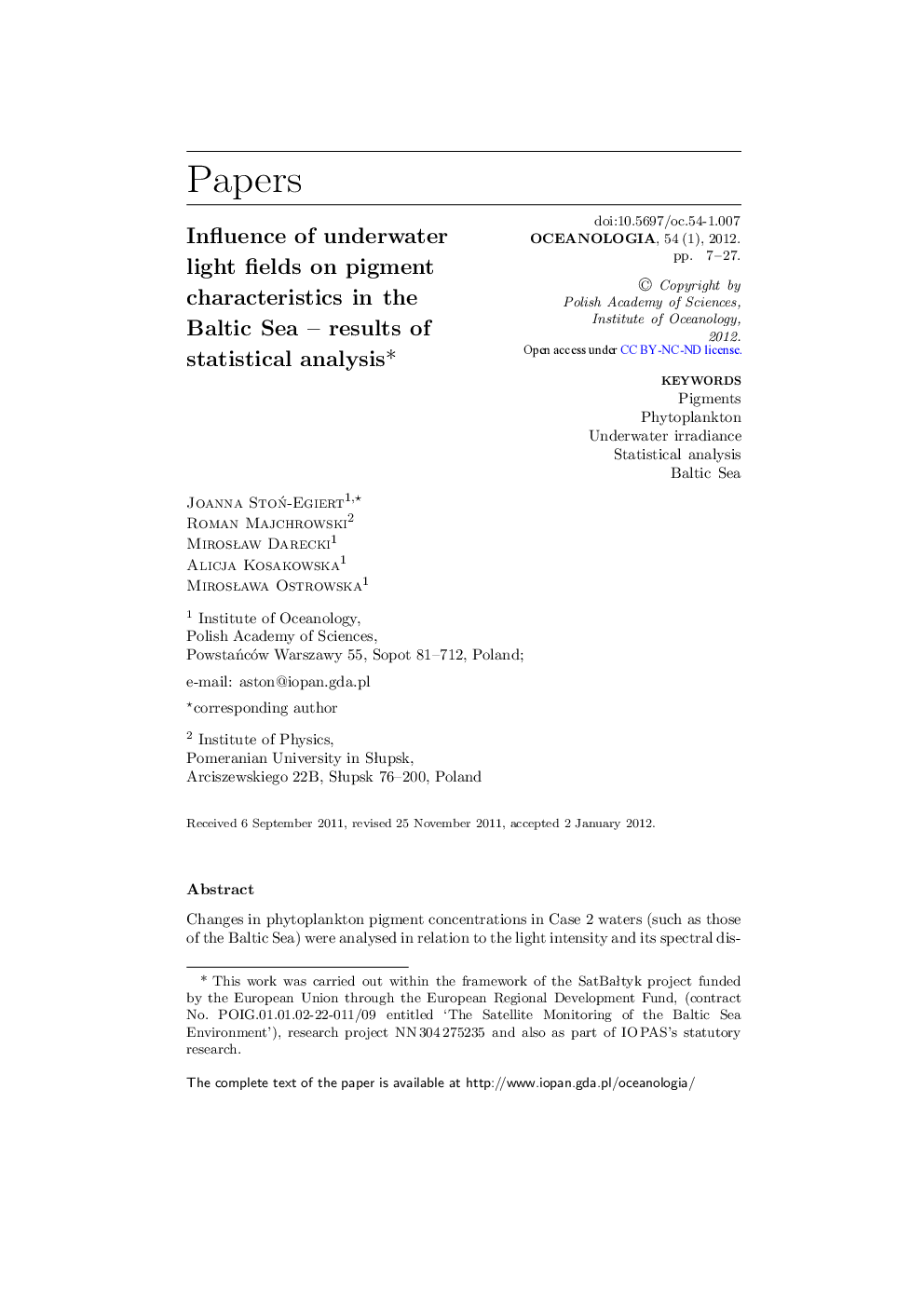| Article ID | Journal | Published Year | Pages | File Type |
|---|---|---|---|---|
| 2069758 | Oceanologia | 2012 | 21 Pages |
Changes in phytoplankton pigment concentrations in Case 2 waters (such as those of the Baltic Sea) were analysed in relation to the light intensity and its spectral distribution in the water. The analyses were based on sets of empirical measurements containing two types of data: chlorophyll and carotenoid concentrations obtained by HPLC, and the distribution of underwater light fields measured with a MER 2040 spectrophotometer – collected during 27 research cruises on r/v ‘Oceania’ in 1999–2004. Statistical analysis yielded relationships between the total relative (to chlorophyll a concentrations) concentrations of major groups of phytoplankton pigments and optical depth τ, between the total relative concentrations of major groups of photosynthetic pigments (chlorophylls b (Cchl b tot/Cchl a tot), chlorophylls c (Cchl c tot/Cchl a tot) and photosynthetic carotenoids (CPSC tot/Cchl a tot)) and the spectral fitting function (the ‘chromatic acclimation factor’), and between the total relative concentrations of photoprotective carotenoids (CPPC tot/Cchl a tot) in Baltic waters and the potentially destructive radiation (PDR), defined as the absolute amount of energy in the blue part of the spectrum (400–480 nm) absorbed by unit mass of chlorophyll a. The best approximations were obtained for the total chlorophyll c content, while the relative estimation errors were the smallest (σ− = 34.6%) for the approximation to optical depth and spectral fitting function. The largest errors related to the approximation of chlorophyll b concentrations: σ− = 56.7% with respect to optical depth and 57.3% to the spectral fitting function.A comparative analysis of the relative (to chlorophyll a content) concentrations of the main groups of pigments and the corresponding irradiance characteristics in ocean (Case 1) waters and Baltic waters (Case 2 waters) was also carried out. The distribution of Cchl b tot/Cchl a tot ratios with respect to optical depth reveals a decreasing trend with increasing τ for Baltic data, which is characteristic of photoprotective pigments and the reverse of the trend in oceans. In the case of the Cchl c tot approximations, the logarithmic statistical error is lower for Baltic waters than for Case 1 waters: σ− = 34.6% for Baltic data and σ− = 39.4% for ocean data. In relation to photoprotective carotenoids (CPPC), σ− takes a value of 38.4% for Baltic waters and 36.1% for ocean waters. The relative errors of the approximated concentrations of different pigment groups are larger than those obtained for ocean waters. The only exception is chlorophyll c, for which the logarithmic statistical error is about 8.8% lower (σ− = 34.6% for Baltic waters and 38.2% for ocean waters). Analysis of the errors resulting from the approximations of the photoprotective carotenoid content, depending on the energy characteristics of the underwater irradiance in the short-range part of PAR, showed that the relative errors are 1.3 times higher for Baltic waters than for ocean waters: σ− = 38.4% for Baltic waters and 32.0% for ocean waters.
